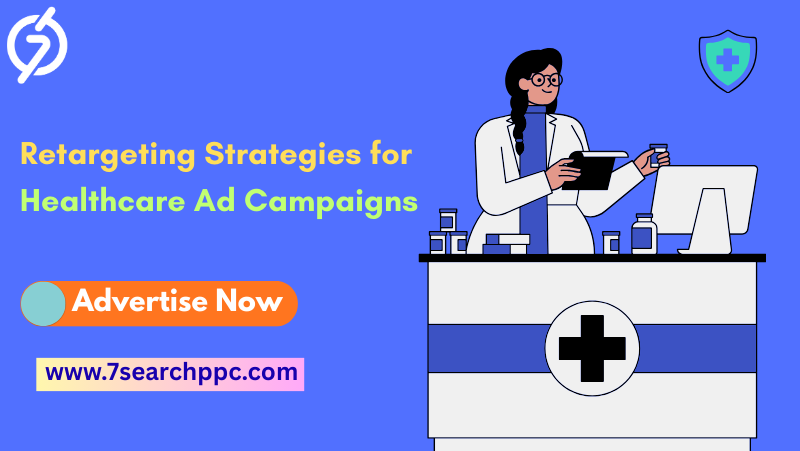In today’s digital landscape, reaching potential patients once is rarely enough. Retargeting has emerged as one of the most effective ways to convert healthcare prospects who have interacted with your content but have not yet taken action. Strategically crafted Healthcare Ad Campaigns using retargeting can reconnect with audiences, nurture engagement, and ultimately drive measurable conversions.
According to industry studies, retargeted healthcare ads generate up to 50% higher conversion rates than standard display campaigns. This proves that patients are more likely to respond when reminded with relevant content at the right moment. For advertisers seeking maximum ROI, retargeting provides a second chance to engage patients effectively. Insights from Healthcare Ad Campaigns demonstrate the impact of combining segmentation, timing, and personalized messaging in retargeting strategies.

Why Retargeting Matters in Healthcare
Many healthcare advertisers struggle to convert first-time visitors or casual content consumers into patients. Unlike consumer products, healthcare decisions are often high-involvement and require multiple touchpoints. Retargeting ensures your brand stays top of mind while guiding patients along their journey.
Recent data shows that 70% of patients who visit a healthcare provider’s website leave without scheduling an appointment. Retargeting strategically addresses this drop-off by serving relevant ads based on the pages visited, content consumed, or interactions made.
Challenges in Healthcare Retargeting
- Compliance Restrictions: Ads must follow privacy regulations such as HIPAA or GDPR while still being effective.
- Audience Fragmentation: Patients interact across multiple devices and platforms, making it difficult to unify retargeting campaigns.
- Message Fatigue: Overexposure to retargeting ads can annoy users, decreasing engagement.
- Measurement Complexity: Linking retargeting interactions to actual appointments or patient actions requires integrated tracking systems.
- Budget Efficiency: Improper targeting or broad campaigns can waste ad spend without measurable ROI.
How High-Converting Retargeting Works
Effective retargeting campaigns are more than repeated display ads. They use insights from patient behavior to deliver personalized messages that address specific needs:
- Behavioral Retargeting: Target patients based on the pages they visited, forms they started, or content they downloaded.
- Segmented Messaging: Create different ad sets for chronic care patients, elective procedure prospects, or preventive care seekers.
- Sequential Messaging: Guide users through an educational journey with content that aligns with their stage in the patient journey.
Smarter Retargeting Approaches
Healthcare advertisers can optimize retargeting campaigns using modern approaches:
- Healthcare Programmatic Advertising: Automates ad placement to serve precise messages based on patient behavior and preferences.
- Healthcare Ad Networks: Dedicated networks like the Healthcare ad network ensure ads appear in trusted environments, improving credibility and engagement.
- Cross-Channel Retargeting: Combines display, social, email, and search retargeting for comprehensive reach.
- Personalized Creative Assets: Using ad copy and visuals that reflect patient needs increases relevance and response rates.
Step-by-Step Guide to Retargeting in Healthcare
Define Retargeting Objectives
Set measurable goals: increase appointment bookings, telehealth consultations, or patient portal registrations. Clearly defined objectives allow for targeted strategy and ROI tracking.
Segment Your Audience
Divide patients based on behavior, demographics, and medical interests:
- Website visitors who browsed specific services
- Patients who abandoned forms or sign-up processes
- Patients interacting with educational content or webinars
- Returning patients for preventive or follow-up care
Develop Personalized Messaging
Personalized messaging ensures relevance:
- Remind patients of services they viewed
- Highlight benefits aligned with patient needs
- Use clear calls to action that encourage scheduling or inquiry
Choose the Right Channels
Patients engage differently across platforms:
- Display ads for general awareness and follow-up
- Social media for engagement and education
- Search retargeting for patients actively researching services
- Email reminders for patients already in your database
Implement Programmatic Retargeting
Programmatic solutions allow:
- Real-time ad placement based on patient actions
- Optimization across devices and platforms
- Budget efficiency by targeting high-value prospects
Monitor and Analyze
Track performance metrics such as:
- Click-through and conversion rates per segment
- Cost per acquisition and return on ad spend
- Engagement patterns across channels
Analyzing data helps refine targeting, messaging, and channel allocation for better results.
Avoid Retargeting Fatigue
Maintain a balance in ad frequency:
- Limit daily impressions per user
- Rotate creative assets
- Use sequential messaging rather than repetitive content
Optimize Continuously
A/B test messaging, creative, and offers to identify what works best. Iterate based on performance data to improve conversions and ROI.
Real-Life Healthcare Retargeting Examples
- Telehealth Follow-Up Campaign: Retargeted website visitors who browsed telehealth services with ads highlighting convenience and doctor availability. Result: 48% increase in appointments.
- Elective Procedure Campaign: Retargeted users who viewed cosmetic surgery pages with testimonials and educational content. Result: 32% higher consultation bookings.
- Preventive Care Campaign: Targeted patients who read wellness content but did not schedule screenings. Personalized email and social retargeting increased bookings by 40%.
- Chronic Disease Program: Retargeted patients with reminders for regular checkups and educational content about condition management. Result: Improved adherence and engagement by 35%.
Key Takeaways
- Segmentation is Critical: Identify high-value patient segments for targeted retargeting.
- Personalization Drives Conversions: Tailor messaging and creative to patient behavior.
- Cross-Channel Approach Works Best: Use display, social, search, and email in combination.
- Programmatic Advertising Optimizes ROI: Automate placement to reduce wasted impressions.
- Monitor, Analyze, and Optimize: Continuous testing ensures campaign effectiveness.
Launch Your Retargeting Campaign
Retargeting enhances the performance of Healthcare Ad Campaigns by reconnecting with potential patients at critical moments. Implementing a strategic approach ensures measurable conversions and higher ROI. Start today and create an ad campaign that effectively nurtures and converts your audience.
Closing
Healthcare advertising requires precision, compliance, and strategic execution. Retargeting offers a unique opportunity to re-engage patients, increase conversions, and maximize ROI.
By combining segmentation, personalization, programmatic technology, and cross-channel execution, advertisers can ensure campaigns reach the right audience with the right message at the right time.
High-performing Healthcare Ad Campaigns not only drive appointments and revenue but also build trust and long-term patient relationships. Retargeting, when executed thoughtfully, is an essential component for any successful healthcare marketing strategy.

 :
: